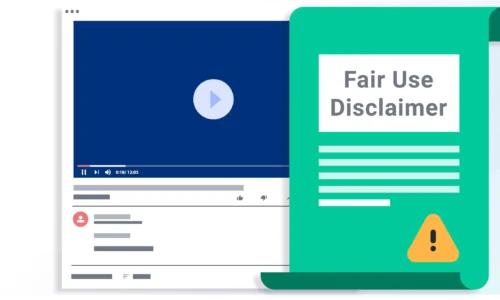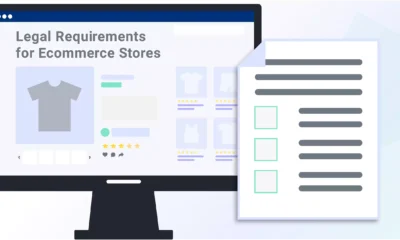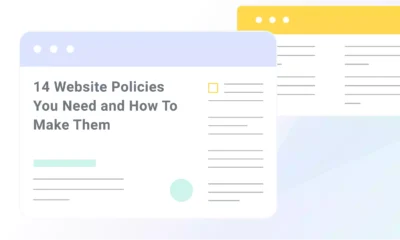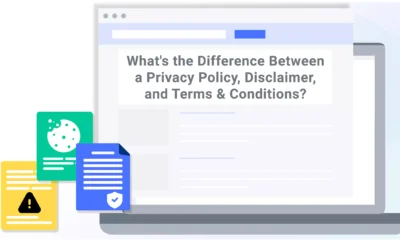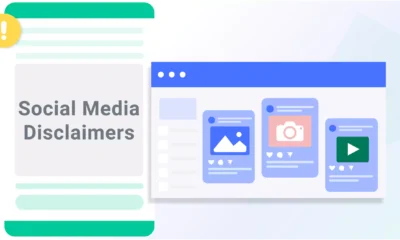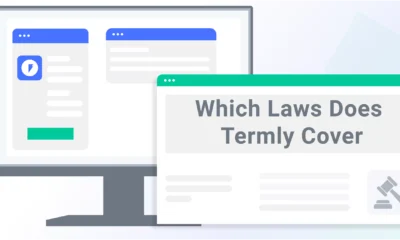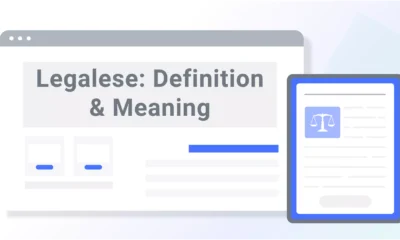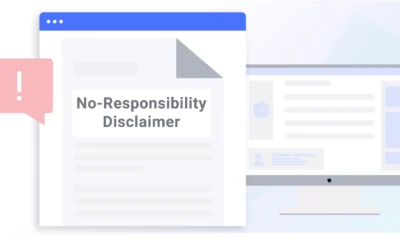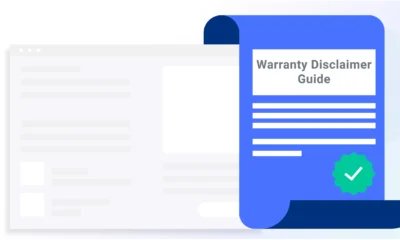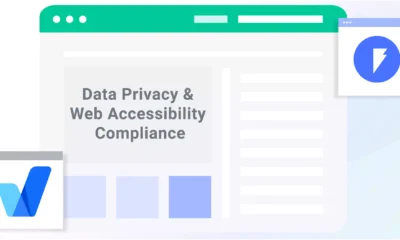Fair use laws permit the commentary, criticism, or parody of a copyrighted work without having a license from the copyright holder, and many websites post content that uses or references another person’s work.
If your use of such content falls within fair use guidelines, posting a fair use disclaimer helps protect your website against copyright infringement claims by disclosing that you legally reference materials without authorization by the copyright owner.
Read on to learn more about copyright law and fair use, how a fair use disclaimer can protect you, and how to draft a fair use disclaimer for your website.
How to Make a Fair Use Disclaimer
You can make a fair use disclaimer for your website using a generator or fair use disclaimer template, or you can write one yourself.
Generate a Free Customized Disclaimer Using Termly
The easiest way to make a fair use disclaimer for your site is to use our disclaimer generator.
It asks fundamental questions about your site, and you can customize it to fit your unique fair use disclaimer needs.
Here’s how to use Termly’s generator to create a custom and legally compliant disclaimer for your needs.
Step 1: Go to Termly’s disclaimer generator.
Step 2: Answer a few simple prompts and questions, and go through all the steps until you reach “Final Details.”
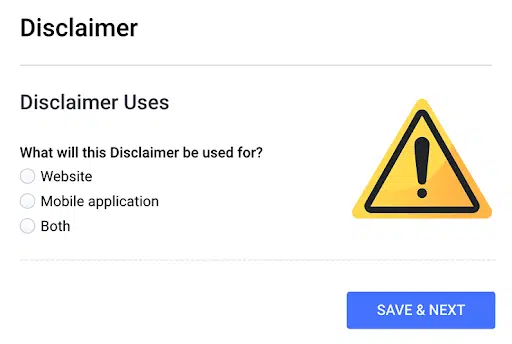
Step 3: Once you’ve completed everything and are satisfied with the preview, click “Publish.”
You will then be prompted to create an account on Termly to save and edit your legal disclaimer further.
Template
You can also use our disclaimer template to make a fair use disclaimer for your website.
Just fill in the blank sections of the template with information about your site and remove any details that aren’t applicable.
How To Write Your Own Fair Use Disclaimer
You can write a fair use disclaimer on your own — just follow these three steps:
You might also include a statement that your website is for educational or entertainment purposes only, helping to further solidify the fair use of the copyrighted content.
Display your fair use disclaimer in a prominent place for users to see and wherever copyrighted content appears.
What Is a Fair Use Disclaimer?
A fair use disclaimer is a statement declaring that your website legally references copyrighted content not authorized for use by the owner.
It lets visitors know that even though you don’t have direct permission from the copyright owner, you’re using their content under the practice of fair use as governed by the U.S. Copyright Act.
Fair use laws allow individuals to broadcast or use copyrighted material without seeking licensing rights as long as it’s used transformatively and without taking full credit.
It’s different from a copyright disclaimer, which describes the copyrights you reserve over unique content you’ve created and own.
Unique materials that are automatically protected by copyright laws include:
- Literary, musical, and dramatic works
- Pantomimes and choreographic works
- Pictorial, graphic, and sculptural works
- Sound recordings
- Motion pictures and other audiovisual works
- Computer programs
- Compilations of works and derivative works
- Architectural works
To engage in fair use of any of the above forms of copyrighted work without attribution or payment to the owner, you must use it for one of the following purposes:
- Commenting
- Parodying
- Reporting
- Researching
- Teaching
- Critiquing
These actions are considered “transformative” instead of presenting the work as your own.
The Fair Use Act & Disclaimers
In the U.S., Section 107 of the Copyright Act covers the fair use of copyrighted works and focuses on four factors:
- The purpose and character of the use, including whether such use is of a commercial nature or is for nonprofit educational purposes.
- The nature of the copyrighted work.
- The amount and sustainability of the portion used in relation to the copyrighted work as a whole.
- The effect of the use upon the potential market for or value of the copyrighted work.
These factors help ensure that the copyright owner is fairly compensated for their work if others use it for their own profit or benefit.
Let’s look at each of these four factors in more detail.
Purpose and Character of the Use
Fair use policies only permit the use of copyrighted works for specific purposes, including:
- Educational, i.e., quoting a book for a book report or distributing copies of an artwork to a class.
- Informational, i.e., sharing or referencing a copyrighted work in a news report.
- Commentary, i.e., parodying a movie or music video in a YouTube video.
The character of the use also matters, in other words, your intentions when using the other person’s materials.
For example, courts generally deem cases as fair use if there was no intention to use the copyrighted material to make profits.
It’s complex to assess if fair use is carried out in cases involving mixed uses of copyrighted works, like a for-profit organization claiming to use original works for educational purposes.
Nature of the Original Copyrighted Work
The nature of the copyrighted work also matters because unique materials are protected by copyright laws as soon as they’re created.
The Copyright Act specifies that:
‘…the fact that a work is unpublished shall not itself bar a finding of fair use.’
Therefore, fair use principles still apply to copyrighted works even if they’ve never been formally published.
Amount and Sustainability of the Work
The amount of the original work you’re using also matters.
Using smaller portions of a copyrighted work is more likely to be considered fair use.
For example, referencing a short snippet of lyrics or sampling a few notes for music is more likely to be deemed fair than using an entire song verse.
Ultimately, it’s easier to claim fair use if you only borrow small samples of a copyrighted work to use transformatively.
Effect of the Use
When considering the effect of how you’re using copyrighted material, it’s essential to assess the impact it may have on the original creator of the referenced material.
It’s a balancing act — your unlicensed use shouldn’t harm the existing or future market of the copyrighted work.
If the work you’re borrowing brings you (instead of the creator) profit, getting a court to consider it fair use can sometimes be more difficult.
When You Need a Fair Use Disclaimer
You need a fair use disclaimer when you use copyrighted works for transformative purposes without permission from the copyright owner.
Having a fair use disclaimer on your site accomplishes three things:
- It acknowledges that you’re aware of U.S. copyright laws governing fair use.
- It can help protect you from being accused of copyright infringement.
- It helps separate your work from the work you’re borrowing.
Without a fair use disclaimer, you’re at risk of getting a cease and desist letter or a lawsuit.
Showing that you’re aware of copyright and fair use laws and are taking steps to protect the original owner’s intellectual property puts you in a better position to defend yourself against wrongful accusations of copyright infringement.
Where To Place a Fair Use Disclaimer
You should place a fair use disclaimer on any page of your website that references or uses someone else’s copyrighted material.
Doing so ensures your site visitors know you’re using someone else’s content, giving them appropriate credit.
It’s also a best practice to put a fair use disclaimer in your terms and conditions agreement.
Examples of Fair Use Disclaimers
Let’s look at some examples of fair use disclaimers used in different contexts depending on the material used.
YouTube Fair Use Copyright Disclaimer
YouTube videos referencing or using copyrighted works should post a fair use disclaimer in the video description.
Posting the disclaimer on screen in the video may also be helpful.
The disclaimer should include the fair use guidelines from Section 107 of the Copyright Act, state that credits go to the content owners, and declare that no copyright infringement is intended.
Below, see an example of a YouTube music video fair use copyright disclaimer that meets these requirements.
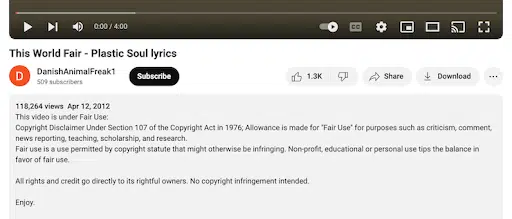
Your fair use disclaimer can directly quote Section 107 of the Copyright Act to let users know what legally constitutes fair use.
You can also add a statement clarifying that you’re using someone else’s content by saying: I do not own this content. All credits go to its rightful owner.
Academic Website Fair Use Disclaimer
Academic journals and websites should post a fair use disclaimer because they often reference, quote, and use copyrighted materials to make educational content.
See an example of the Louisiana Office of Student Financial Assistance below.

The LOSFA disclaimer specifies that the site is for educational purposes only, followed by an explanation of fair use laws and the definition of fair use.
You can also use a generic fair use statement like the example above, which is a short and simple way to let readers know you’re aware of your copyright obligations.
Healthcare Website Fair Use Disclaimer
Health and wellness websites often rely on medical studies and other materials they don’t necessarily own, making a fair use disclaimer necessary.
For example, the Multiple Chronic Conditions website’s fair use disclaimer includes thorough explanations of fair use and copyright laws, as shown below.
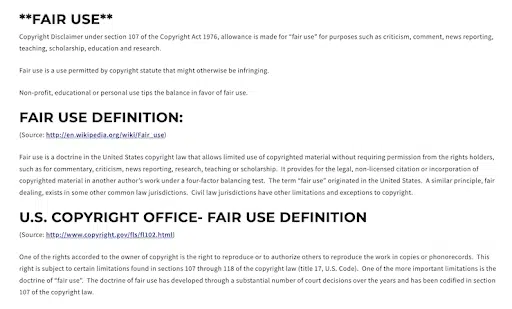
Going over the definitions of fair use and copyright could be helpful for users as the two concepts are closely related.
However, for most business websites, a fair use disclaimer doesn’t need to be overly detailed to be effective.
Online Shop Fair Use Notice
Online shops that use photos, content, or other materials from external sources should post a fair use disclaimer on their site.
For example, Choices Natural Market’s fair use notice explains how their use of photos from other sources constitutes fair use according to the Copyright Law, as shown below.
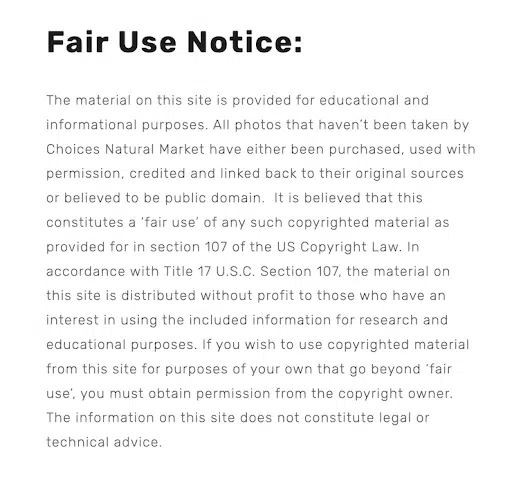
Their disclaimer states that the materials on the site are provided for educational and informational purposes and not used for profit.
Summary
If you reference or use materials you don’t own on your website, social media, or other platform, posting a fair use disclaimer helps you fight against wrongful copyright strikes.
It acts as a notice to your users that you’re aware of copyright laws and are giving credit to the work’s original owner, not taking any for yourself.
Protect your content and use our Disclaimer Generator to make one quickly and easily that suits your unique needs.

